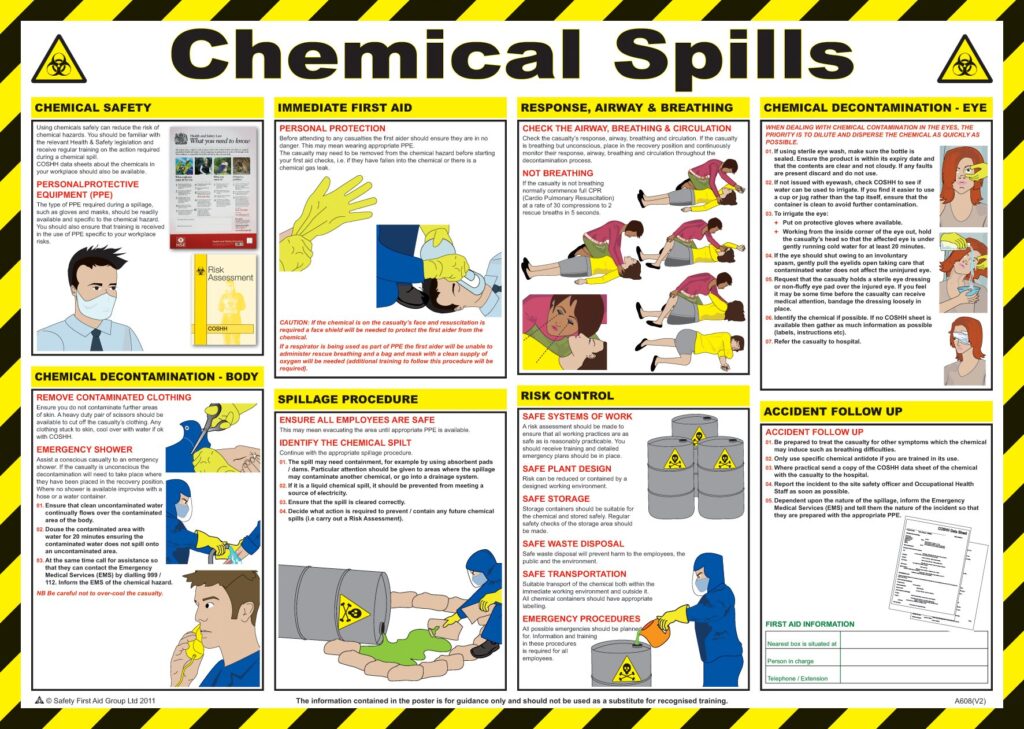What are the three C's of a chemical spill?

Chemical spills can occur in various settings, such as laboratories, industrial facilities, or even in everyday life. When a chemical spill happens, it is crucial to have a clear plan in place to ensure the safety of individuals and the environment. The three C's of a chemical spill - containment, control, and cleanup - are essential components of an effective response.
What is a Chemical Spill?
A chemical spill refers to the accidental release of hazardous substances, such as chemicals or pollutants, into the environment. These spills can pose significant risks to human health, wildlife, and ecosystems. It is essential to handle chemical spills promptly and effectively to minimize the potential harm they can cause.
The Three C's of a Chemical Spill
1. Containment
Containment is the first step in managing a chemical spill. It involves preventing the spread of the hazardous substance and confining it to a specific area. This can be achieved by using barriers, absorbent materials, or even physical isolation. The primary goal of containment is to limit the potential for further exposure and contamination.
2. Control
Once the spill is contained, the focus shifts to controlling the situation. Control measures aim to minimize the risks associated with the spill, such as fire, explosion, or the release of toxic fumes. This may involve activating emergency response protocols, shutting off ventilation systems, or using specialized equipment to neutralize or safely remove the hazardous substance.
3. Cleanup
After containment and control, the final step is the cleanup process. This involves safely removing and disposing of the hazardous substance and any contaminated materials. The cleanup should be conducted by trained professionals using appropriate techniques and equipment to ensure thorough decontamination. It is crucial to follow proper disposal procedures to prevent further harm to the environment.
Important Considerations for Handling Chemical Spills
When dealing with a chemical spill, there are a few important considerations to keep in mind:
- Identify the hazardous substance and assess its potential risks.
- Ensure the safety of all individuals involved by providing proper training and protective equipment.
- Follow established protocols and guidelines for spill response.
- Communicate the spill to relevant authorities and stakeholders.
- Document the incident for future reference and analysis.
Proper Personal Protective Equipment (PPE)
Wearing the appropriate Personal Protective Equipment (PPE) is crucial when handling chemical spills. PPE acts as a barrier between the hazardous substance and the individual, reducing the risk of exposure. Some common types of PPE for chemical spills include:
- Gloves
- Goggles or face shields
- Protective clothing, such as coveralls or aprons
- Respiratory protection, such as masks or respirators
- Boots or shoe covers
Proper selection, use, and maintenance of PPE are essential to ensure its effectiveness in protecting against chemical hazards.
Response and Emergency Procedures
Every facility should have well-defined response and emergency procedures in place to handle chemical spills. These procedures outline the steps to be taken during various spill scenarios, including who to contact, how to evacuate if necessary, and the specific actions to be performed. Regular drills and training sessions can help ensure that all employees are familiar with the procedures and can respond quickly and effectively in the event of a spill.
Conclusion
The three C's of a chemical spill - containment, control, and cleanup - are essential elements in managing and mitigating the risks associated with hazardous substance releases. By following proper procedures, using the right protective equipment, and having a well-prepared response plan, the impact of chemical spills can be minimized, protecting both people and the environment.
Frequently Asked Questions
1. What is the role of containment in managing a chemical spill?
Containment helps prevent the spread of a hazardous substance and limits further exposure and contamination. It involves confining the spill to a specific area using barriers, absorbent materials, or physical isolation.
2. How is control achieved during a chemical spill?
Control measures aim to minimize the risks associated with a chemical spill, such as fire, explosion, or the release of toxic fumes. This may involve activating emergency response protocols, shutting off ventilation systems, or using specialized equipment to neutralize or safely remove the hazardous substance.
3. What steps are involved in the cleanup process of a chemical spill?
The cleanup process of a chemical spill involves safely removing and disposing of the hazardous substance and any contaminated materials. Trained professionals use appropriate techniques and equipment to ensure thorough decontamination and follow proper disposal procedures to prevent further harm to the environment.
4. Why is it important to have proper PPE when dealing with a chemical spill?
Proper Personal Protective Equipment (PPE) acts as a barrier between the hazardous substance and the individual, reducing the risk of exposure. Wearing the appropriate PPE is crucial to protect against potential health hazards associated with chemical spills.

Leave a Reply